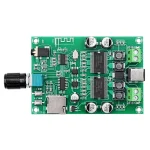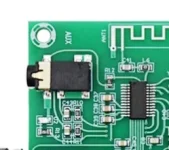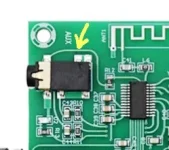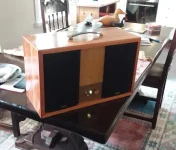I wish to use the amp board in the picture but in my application the aux in would be hard to access. I would like to have a jumper cable permanently plugged into the aux plug so I can connect to it remotely, but doing so prevents use of Bluetooth function, even if the other end of the cable is not connected to any device.
I was thinking of unsoldering the aux jack and mounting it remotely and connected to the board by wires, but that seems tricky.
Is there away I can just eliminate it from switching off Bluetooth if I use the cable as I originally intended ?
I was thinking of unsoldering the aux jack and mounting it remotely and connected to the board by wires, but that seems tricky.
Is there away I can just eliminate it from switching off Bluetooth if I use the cable as I originally intended ?




